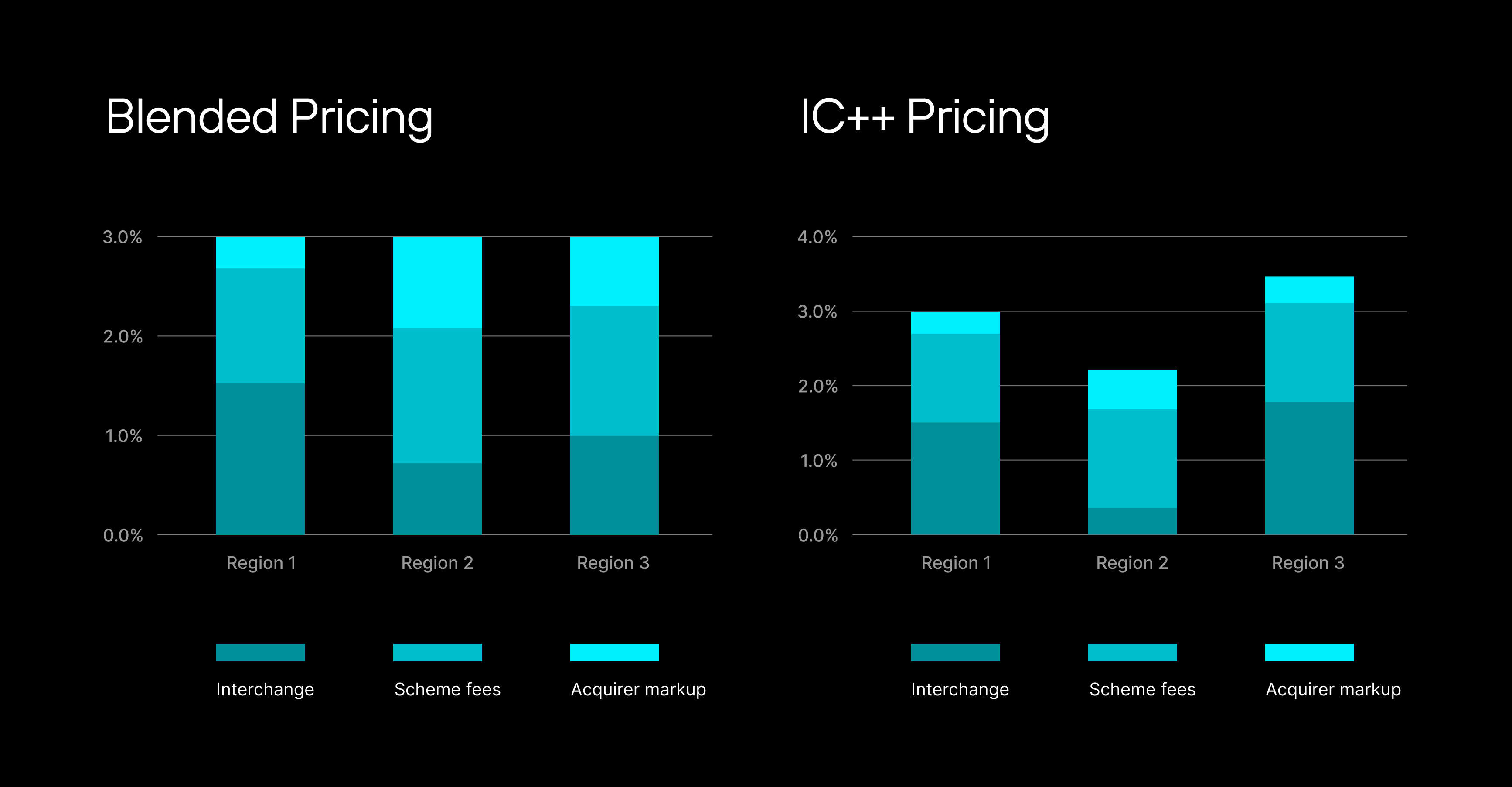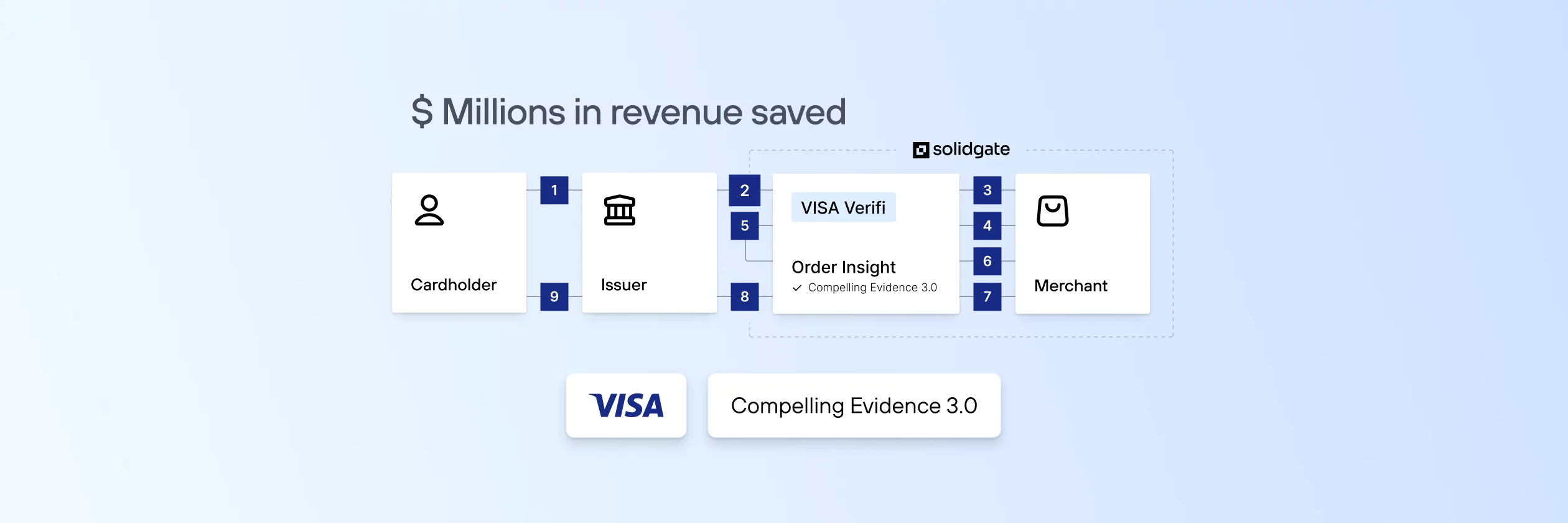Behind every tap, swipe, or insert of a payment card lies a complex financial ecosystem that most consumers never see. At the heart of this system are interchange fees – often abbreviated as “IC” in industry parlance – which form the foundation of card payment economics. These fees represent a significant cost for merchants while simultaneously funding the card payment infrastructure that consumers rely on daily.
For business owners processing card payments, understanding these fees isn’t just an academic exercise – it directly impacts profitability. Yet the terminology, calculation methods, and pricing models surrounding interchange can seem deliberately obscure.
This article aims to demystify interchange fees and the IC++ pricing model, providing merchants with the knowledge needed to evaluate their payment processing costs effectively.
Table of Contents
What are Interchange Fees?
Interchange fees are charges that merchants pay whenever a customer uses a credit or debit card for a purchase. Though merchants experience these as costs, interchange fees serve as the economic engine powering the entire card payment system.
These fees flow primarily to the card-issuing banks (the financial institutions that provide cards to consumers). They help cover the costs of card issuance, fraud prevention, payment guarantees, and the interest-free grace periods that cardholders enjoy before their monthly bills come due.

Interchange fees vary widely based on multiple factors, including card type, transaction method, business category, and security measures implemented. Premium rewards cards typically carry higher interchange rates than basic cards, while in-person transactions generally have lower rates than online purchases due to different risk profiles.
How do interchange fees work?
The process of interchange fee settlement occurs behind the scenes every time a card transaction takes place. The issuer bank receives interchange fees from the acquirer bank as compensation for processing the transaction and bearing risks such as fraud and credit default.
How are interchange fees determined?
Interchange rates are established by the card networks: Visa, Masterсard, Discover, etc. These rates are not static – Visa and Masterсard usually update them twice a year, other networks – annually. The calculation of interchange fees is rather complex and depends on various factors, such as:
- Card brand
- Card type
- Region of the issuer, acquirer, and the merchant
- Merchant’s business type
- Transaction type
- Identity of the cardholder (individual or legal entity)
- Security protocol used
The volume of transactions of a particular issuer, acquirer, or merchant is also taken into account. Big merchants like Amazon or Walmart, for example, negotiate lower interchange fees, which vary based on what is being sold, where, how, and to whom. Furthermore, it is worth noting that dozens of smaller fees contribute to the overall interchange commission for each transaction. Therefore, transparency is often an issue.
Credit card interchange fee vs debit card interchange fees
Credit card interchange fee rates are generally higher than debit card interchange fees, reflecting greater risk and cost to issuers. Debit card fees can be up to 5 times lower, making them more cost-effective for merchants.
Regulated and unregulated interchange
In some countries, card networks can solely determine the size of the interchange fee. In other countries, the interchange may be regulated by the Central Banks or other authorities.
In Europe, for example, the Interchange Fee Regulation caps interchange fees on EEA domestic and EEA cross-border consumer debit and credit transactions, and the Schemes set interchange fees on these transactions in compliance with the Interchange Fee Regulation. A similar approach is also applied in Australia.
Where not regulated, the Schemes set interchange rates based on their own judgment. In 2015, the EU adopted the Interchange Fee Regulation (IFR). The purpose of this regulation was to place a cap on interchange fees for consumer card payments, to reduce fees merchants pay, and to ensure that their costs for accepting card payments are not higher than cash payments.
The interchange fee cap in the EU for debit card payments is 0.2% of the transaction, and for credit cards, it is 0.3%. It has been estimated that the IFR has saved merchants EUR 1.2 billion per year in fees and significantly increased card acceptance.
High interchange fees – good or bad?
Generally, higher interchange fees lead to higher revenues for the issuing banks. Lower interchange fees, in turn, contribute to lower prices for the merchants and, ultimately, the consumers. At the same time, several factors should also be considered in this regard:
- The higher the interchange fees are, the more space is created for the development of alternative payment methods, which may be cheaper.
- If the issuing banks do not cover the costs of their card programs with interchange fees, the quality of their card offering may become lower.
IC++ pricing VS Blended pricing
Interchange++ is a type of pricing that breaks down the acquiring fees of a merchant into three components:
- The Interchange fee that goes to the issuing bank
- The scheme fee that goes to the Schemes (first +)
- The acquirer fee (second +)
Although this approach is more transparent for merchants, its calculation and accounting are way more complicated, as multiple factors should be taken into account. And in many cases, the merchant is unable to know the price for one or another transaction before it actually takes place. To resolve this problem, many acquirers use blended pricing (for example, 2.9% + fixed fee for each transaction).
Generally, blended pricing is more convenient for startups and SMBs, while IC++ pricing works better for large businesses and corporations, which can use various mechanisms to save costs and make wider and smarter data-driven decisions when accepting payments.

Are interchange fees negotiable?
In the majority of cases, interchange (as well as the Schemes’ fees) cannot be negotiated. However, you can negotiate your acquirer’s markup.
How to calculate Interchange Fees
Interchange fees are calculated as a percentage of the transaction. The percentage is based on EU regulations, the type of card used, and the fee set by the card issuing company. The max interchange fee for a credit card transaction in the EU is 0.3%. So on a $100 credit transaction, the merchant would pay a maximum of $0.3 ($100 x 0.003).
Factors affecting interchange rates
The interchange rates can vary significantly from transaction to transaction. Here are the key factors that influence interchange fees:
Card Type and Category:
- Credit cards typically have higher interchange rates than debit cards
- Premium/rewards cards carry higher rates than basic cards
- Commercial/business cards generally have higher rates than consumer cards
Transaction Method:
- Card-present (in-person) vs. card-not-present (online, phone) transactions
- Chip transactions vs. magnetic stripe
- Contactless/NFC vs. other payment methods
Business Category:
- Merchant category code (MCC) that identifies the business type
- Risk level associated with the industry
- Special rates for specific sectors (e.g., supermarkets, education, healthcare)
Transaction Specifics:
- Transaction amount
- Settlement timeframe
- Authorization methods
- Security protocols implemented
These factors combine to create hundreds of possible interchange rate categories, making the system notoriously complex to navigate without specialized knowledge.
Interchange Fee Rates Examples
To see just how much interchange fee rates can differ based on different types of cards and purchases, check out this interchange fee example:
A woman comes into your store and decides to buy $1000 worth of clothes. She pulls out her American Express card. Based on American Express’ interchange fees, you could end up coughing up as much as $35! But if the woman had used a Visa, the fee could be as low as $14.
The average Visa and Mastercard interchange fee rate ranges from 1.4% (Visa) or 1.5% (Mastercard) to 2.5% (Visa) or 2.6% (Mastercard). However, American Express has much higher interchange fees, ranging from 2.3% to 3.5%, which is why American Express’ acceptance rate is much lower than Visa or Mastercard.
Whether a customer uses a credit or debit card also greatly impacts the interchange fee and the location of the card issuer. The average interchange for credit cards is around 2%, but it is only 0.3% for debit cards.
For example, let’s say a person with an EU-issued credit card goes online and purchases 2 airline tickets for $500. The merchant would only have to pay a 0.3% interchange fee due to the EU IFR regulation. However, if that same person uses a non-EU-issued credit card, the interchange fee could surpass 2%!
How to Keep Away From Interchange Fees: Optimizing Interchange Fees
Are interchange fees eating into your bottom line? Fortunately, you can shave interchange rates by:
- Promoting debit card usage
- Negotiating with the credit card company
- Prioritizing certain types of transactions
- Using Address Verification Service (AVS)
- Exploring alternative payment types
Promote debit card usage
Debit cards have an interchange fee of 0.2% in the EU, while credit cards have a 0.3% interchange fee. If your business is generating a significant amount of sales, for example, $10 million per year, if you could convince 100% of your customers to use debit cards instead of credit cards, your business would have an extra $10,000 in annual revenue.
Try to cut your charges by haggling with the credit card company
If you are a large company, you definitely have some negotiating power! Often, a card issuer will offer a small discount if you generate a significant amount of revenue and are able to thrive without their card network. Even if you are a small company, it doesn’t hurt to ask for a discount.
Check the transaction types you use
Card present and card not present transactions have completely different interchange fees when the card is issued outside the EEA. For example, a non-EU-issued Visa consumer credit card used in a card-not-present transaction has a 1.5% interchange fee, while an EU-issued Visa credit card has just a 0.3% interchange fee.
Also, business transactions are not subject to the EU price cap. For a Visa business credit card transaction, the interchange fee is 2.05%, but for a Visa consumer credit card transaction, the interchange fee is just 0.3%.
Use the address verification service (AVS)
If a transaction you process gets hit with a chargeback, you lose the interchange fee applied to the transaction. Also, if your business is subject to a number of chargebacks, your company may be deemed high risk, and the card issuing company could increase your interchange fee. To avoid this situation, you should use an Address Verification Service (AVS). AVS reduces the chances of fraudulent transactions by automatically verifying the cardholder’s billing address with the card issuer.
To use AVS, you need to collect the buyer’s billing address and submit it while making an authorization request. You then need to develop a system based on the results of the AVS. For example, if neither the postal code nor the address matches the card, you may opt to automatically decline the payment. If the address matches but not the postal code, you may set a purchasing limit.
Consider alternative payment types
Alternative payment methods often lower transaction costs, especially compared to credit cards. Here are some common, popular, and cheap alternative payment types worth exploring:
- Online bank transfer – Give your customers the ability to send money directly from their bank account to yours and cut out the middlemen!
- E-wallets – E-wallets allow consumers to make secure, electronic, cashless transactions from an app. Popular e-wallets include Apple Pay, Cash App, PayPal, Google Pay, and Venmo.
- Prepaid cards – Prepaid cards are similar to debit cards but are not connected to a bank account and instead have money loaded on them. Visa, Mastercard, and Paysafe are common providers.
FAQs
What are interchange fees?
Interchange fees are transaction fees charged between banks for the processing of credit and debit card transactions. These fees are typically paid by the merchant’s bank to the cardholder’s bank for facilitating the transaction.
How are interchange fees determined?
Interchange fees are determined by card networks such as Visa, Mastercard, and American Express. These networks set the fees based on various factors, including the type of card used, the type of merchant, the transaction amount, and the risk associated with the transaction.
Who pays interchange fees?
Although interchange fees are charged between banks, ultimately, they are typically paid by the merchant. Merchants often pass on these fees to their customers through higher prices or surcharges. In some cases, the merchant may negotiate lower interchange fees based on factors such as transaction volume or business type.
Are interchange fees negotiable?
Network-set fees usually aren’t, but merchants can negotiate their acquirer’s markup.
How can merchants optimize interchange fees?
By promoting debit usage, negotiating fees, using AVS, and offering alternative payments.




